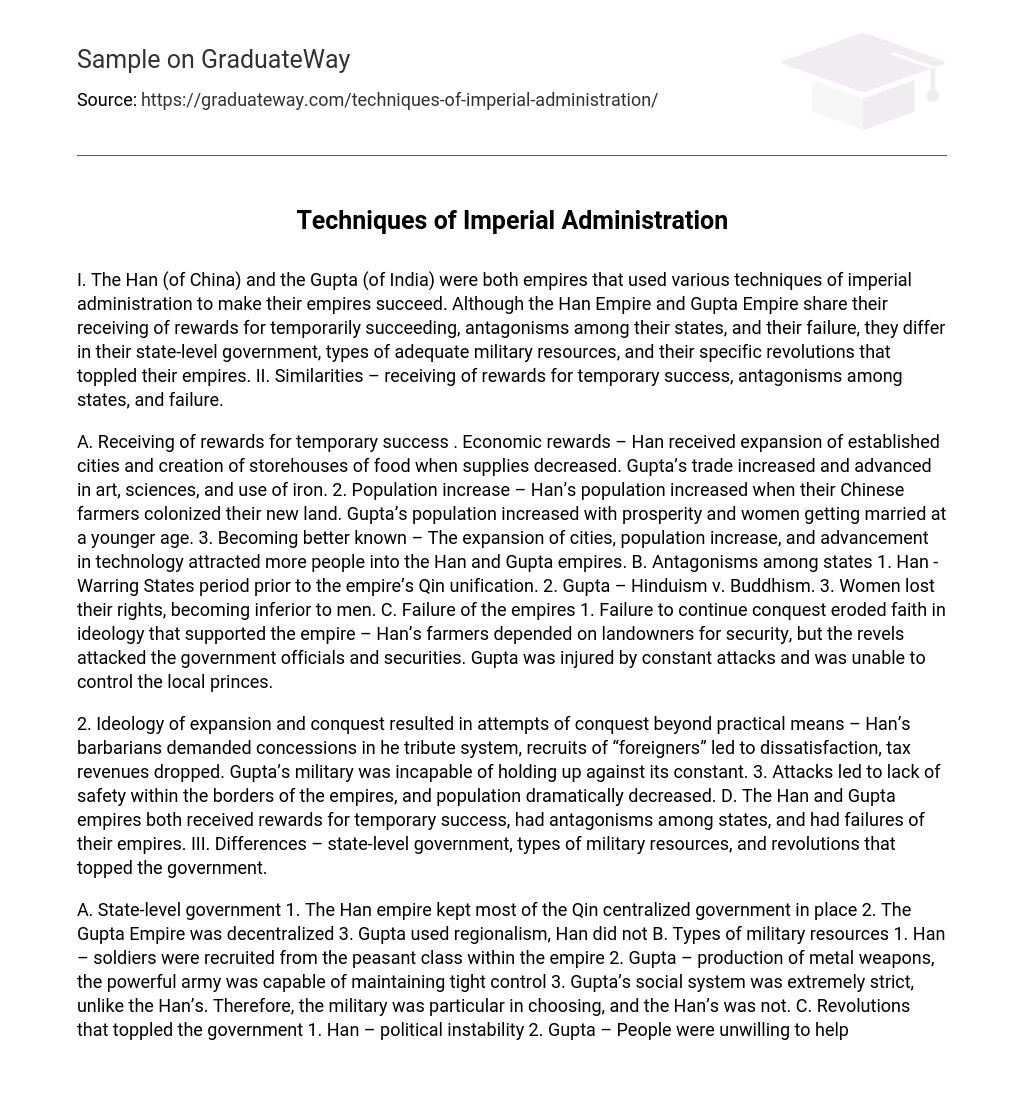I. The Han (of China) and the Gupta (of India) were both empires that used various techniques of imperial administration to make their empires succeed. Although the Han Empire and Gupta Empire share their receiving of rewards for temporarily succeeding, antagonisms among their states, and their failure, they differ in their state-level government, types of adequate military resources, and their specific revolutions that toppled their empires. II. Similarities – receiving of rewards for temporary success, antagonisms among states, and failure.
A. Receiving of rewards for temporary success . Economic rewards – Han received expansion of established cities and creation of storehouses of food when supplies decreased. Gupta’s trade increased and advanced in art, sciences, and use of iron. 2. Population increase – Han’s population increased when their Chinese farmers colonized their new land. Gupta’s population increased with prosperity and women getting married at a younger age. 3. Becoming better known – The expansion of cities, population increase, and advancement in technology attracted more people into the Han and Gupta empires. B. Antagonisms among states 1. Han – Warring States period prior to the empire’s Qin unification. 2. Gupta – Hinduism v. Buddhism. 3. Women lost their rights, becoming inferior to men. C. Failure of the empires 1. Failure to continue conquest eroded faith in ideology that supported the empire – Han’s farmers depended on landowners for security, but the revels attacked the government officials and securities. Gupta was injured by constant attacks and was unable to control the local princes.
2. Ideology of expansion and conquest resulted in attempts of conquest beyond practical means – Han’s barbarians demanded concessions in he tribute system, recruits of “foreigners” led to dissatisfaction, tax revenues dropped. Gupta’s military was incapable of holding up against its constant. 3. Attacks led to lack of safety within the borders of the empires, and population dramatically decreased. D. The Han and Gupta empires both received rewards for temporary success, had antagonisms among states, and had failures of their empires. III. Differences – state-level government, types of military resources, and revolutions that topped the government.
A. State-level government 1. The Han empire kept most of the Qin centralized government in place 2. The Gupta Empire was decentralized 3. Gupta used regionalism, Han did not B. Types of military resources 1. Han – soldiers were recruited from the peasant class within the empire 2. Gupta – production of metal weapons, the powerful army was capable of maintaining tight control 3. Gupta’s social system was extremely strict, unlike the Han’s. Therefore, the military was particular in choosing, and the Han’s was not. C. Revolutions that toppled the government 1. Han – political instability 2. Gupta – People were unwilling to help one another 3.
The Yellow Turban peasants rebelled against the Han empire, the White Huns invaded the Gupta empire D. The Han and Gupta empires used different methods of running their government and maintaining their military. IV. The Han and Gupta empires were very complex and used different tactics to make their empires succeed in terms of their government and military. Although they share their receiving of rewards for temporarily succeeding, antagonisms among their states, and their failure, they differ in their state-level government, types of adequate military resources, and their specific revolutions that toppled their empires.





